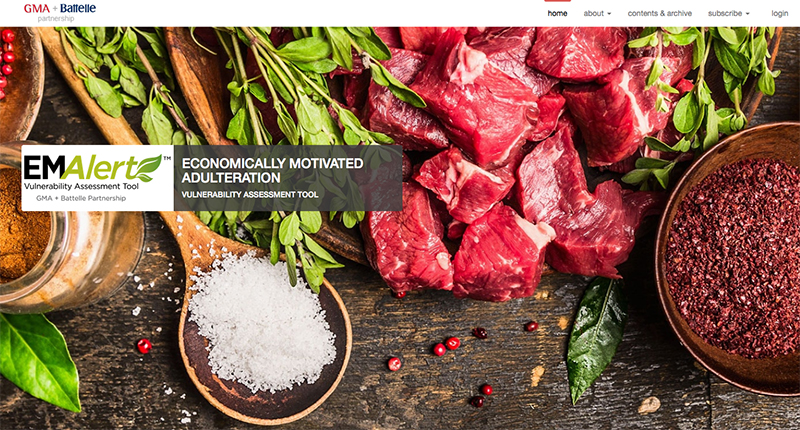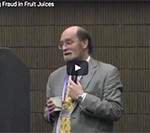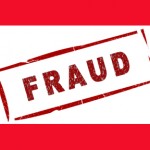Economically motivated adulteration (EMA) has considerable economic ramifications, impacting businesses from a financial and liability perspective, posing dangers to consumers, and eroding product confidence. One of the biggest issues with monitoring the volume and type of adulterated products is the fact that the landscape of food fraud is ever changing. “The perpetrators are always two steps ahead, so innovation is needed to keep up,” said Jeff Moore, Ph.D., director of science, food program at U.S. Pharmacopeial Convention (USP), at the GMA Science Forum last week.
GMA and Battelle have teamed up to launch EMAlert, a tool that companies can use to quantitatively assess the vulnerability of their supply chains to EMA. The secure, cloud-based platform comes with 50 commodities off the shelf (including spices, grains, dairy, seafood, meat, oils, fruits, veggies, and food ingredients). It was developed fairly rapidly (Battelle, which serves as the technology provider, started development at the beginning of this year) and still needs to be validated; full validation will be presented at the IAFP meeting this summer. And if EMAlert lives up to its potential, it could help companies be more nimble in monitoring and acting on threats in their supply chain.
The purpose of the tool is to generate quantitative vulnerability results that allow people to make actionable decisions based on numeric values. As such, it has been designed to be dynamic and customizable, since every company has its own risk tolerance. In addition, it looks at real-time environmental changes, because you can’t have a static tool to monitor vulnerability when it’s always changing, said Joseph A. Scimeca, Ph.D., vice president, global regulatory & scientific affairs at Cargill, Inc.

“The EMA threat is changing,” said Ashley Kubatko, principal research scientist at the Battelle Memorial Institute. “A static assessment is only a snapshot in time.” EMAlert pulls live, automated data that takes into account economic drivers (value, volume, and scarcity of product), historical drivers (how often has product adulteration occurred in the past, geopolitical stability), and ease drivers (how frequently the commodity is tested; whether there are government regulations around the commodity group; how often the product changes hands or is repackaged). Data is pulled from several databases, including FDA, UN Comtrade, USP, Quandi, and Transparency International.
When creating the tool Battelle borrowed from its approach in working with the U.S. Department of Homeland Security to develop models that predict terrorist decision making and used the same mathematical methodology, providing a predictive model of fraudster behavior. Keeping in mind that perpetrators are also constantly monitoring how law enforcement and industry is keeping track of their strategies, EMAlert not only requires a subscription, but Kubatko says that Battelle will also be monitoring its users to ensure there is no suspicious activity within EMAlert.






